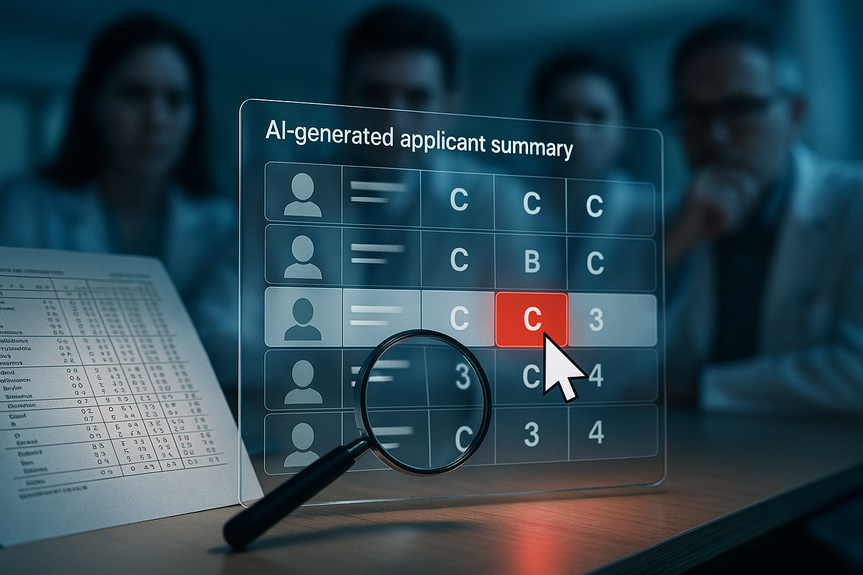how to write AI image prompts that get pro-level results fast with precise style, edits, and credits
Learn how to write AI image prompts that actually return the picture you imagine. Start with a clear subject, a simple action, and a specific setting. Add style, mood, lighting, and colors. Pick the right tool for your budget. Edit in small steps. Label your results honestly. That is the whole game.
If your AI images look average, you do not need art school. You need a plan. Small words make big changes when you guide a generator. I have tried most popular tools and learned that good prompts beat guesswork every time. In this guide, I show you how to pick the right service, how to structure your ideas, and how to avoid common mistakes. You will see practical prompt formulas, fast iteration methods, and simple “recipes” you can reuse. By the end, you will know how to write AI image prompts that give you sharp, believable results without long trial and error.
Pick the right generator for your goal
Choosing the right service saves time and credits. Each tool has strengths and limits. Start here if you are not sure which way to go.
Quick picks by need
Best overall creativity and follow-up edits: DALL·E 3 inside ChatGPT Plus. It follows detailed prompts well and lets you refine by chatting. It costs about $20 per month. OpenAI may use your content for training; you can submit a request to opt out per their policy.
Best free plan with handy tools: Leonardo AI. It has a solid free tier, many styles, and a “prompt improver” that expands short ideas into richer descriptions. Canva owns Leonardo now, but you can still use it on the Leonardo website.
Best for beginners on a tight budget: Canva Magic Media. It is very easy to use. You get 50 lifetime free credits. After that, you need Pro for more generations. Canva opts you out of using your content for AI training by default.
Good if you live in the Google ecosystem: Gemini’s newest image features (nicknamed “nano banana” in some tests) can help with editing existing photos and generating visuals, with plans around $20 per month.
Tip: Your tool shapes your prompt style. Canva likes simple inputs. DALL·E 3 accepts longer, more detailed prompts. Leonardo sits in between and offers strong post-generation editing.
How to write AI image prompts: a simple framework
There is no magic sentence. But there is a clear structure that works in most tools. Use this “from left to right” pattern to keep your prompt focused.
The 11-point prompt blueprint
Build prompts in this order, and skip parts you do not need:
Subject: who or what is the focus?
Action: what are they doing?
Scene: where does it happen? Indoors, outdoors, city, forest, studio
Style: illustration, photo, watercolor, oil painting, 3D render, isometric
Mood: calm, dramatic, playful, eerie, hopeful
Lighting: soft light, golden hour, neon, backlit, moody, high key
Color: warm, cool, pastel, bold primaries, muted earth tones
Camera: macro, wide angle, 50mm, telephoto, aerial, isometric
Composition: rule of thirds, centered, close-up, long shot, top-down, flat lay
Quality cues: ultra-detailed, sharp focus, high resolution, crisp textures
Format: aspect ratio or dimensions, like 16:9, 4:5, 1024×1024
Example prompts using the blueprint
“Weathered astronaut, walking across a dusty moon plain, wide alien sky, cinematic photo style, solemn mood, soft rim lighting, cool blue and gray palette, 50mm lens, rule of thirds, ultra-detailed and sharp, 16:9.”
“Cozy beach cottage at dusk, lanterns glowing on the porch, illustration style, peaceful mood, warm light against cool blues, gentle fog, centered composition, crisp linework, subtle textures, 4:5.”
Notice the second example avoids vague trend terms. Instead of “cottagecore coastal grandma,” it says “peaceful mood, warm light, cool blues, gentle fog.” Clear words beat buzzwords. This is what teaches you how to write AI image prompts that the model can follow.
Keep it clear, not crowded
More words can help, but only if they add clarity. Do not stack ten different styles in one sentence. If you mix “watercolor,” “photoreal,” and “vector” together, you confuse the model and get mushy results. Pick one primary style and one or two supporting details.
Style without name-dropping artists
Many generators block prompts that call for living artists or public figures by name. You can still guide style clearly without names.
Use movements and materials
Art movements: art nouveau, impressionism, Bauhaus, brutalism, Ukiyo-e
Analog mediums: oil on canvas, ink wash, charcoal sketch, screen print
Design cues: minimalist, maximalist, retro-futuristic, mid-century modern
Cultural techniques: paper cut-out, woodblock print, mosaic tile
Example: Instead of “in the style of [living artist],” write “bold brush strokes, high contrast chiaroscuro, oil on canvas, baroque lighting.”
Get consistent results with simple controls
Your tool may expose extra settings. They can help you lock in a look or fix drift.
Key settings to watch
Aspect ratio: Match the channel. 1:1 for avatars, 4:5 for Instagram feed, 16:9 for slides and video.
Seed: Reuse a seed to keep composition and vibe similar across a set. Change the seed to explore variety.
Guidance strength (CFG): Higher values force the model to follow your words more strictly. If results look stiff or overbaked, lower it a bit.
Negative prompts: Tell the model what to avoid: “no text, no extra fingers, no watermark, no blur.”
Steps/quality toggles: More steps can add detail but cost time/credits. If your image already looks clean, stop early.
Upscale/sharpen: Generate small, then upscale once to reduce artifacts.
Note: Not every service shows all controls. DALL·E 3 hides some knobs but listens to clear instructions. Leonardo and Midjourney-like tools expose more dials.
Iterate the smart way
Do not try to fix a broken image with twenty edits. Generators often “forget” details after many changes.
When to edit the prompt vs the picture
Use chat edits when you want small tweaks: “Make the lighting warmer,” “Add light rain,” “Move the camera closer.”
Regenerate with a better prompt when structure is wrong: wrong pose, messy composition, wrong number of characters.
Restart clean if the image keeps drifting. Carry over the best lines from your last prompt, and remove weak or duplicate terms.
A fast A/B workflow
Write one tight prompt using the blueprint. Generate 4 images.
Pick the best two. Note what worked: lighting, angle, palette.
Clone the prompt and change one thing at a time: a different lens, a different time of day, or a new mood.
Repeat once or twice. Stop when you get a keeper. Upscale and export.
This loop teaches you how to write AI image prompts that produce repeatable, on-brand images in less time.
Composition and lighting recipes that never fail
Use these ready-made “recipes” when you need a starting point. Swap the subject and setting to match your project.
Portrait that pops
“Head-and-shoulders portrait of [subject], studio photo style, friendly mood, softbox lighting from 45 degrees, neutral gray background, 85mm lens, shallow depth of field, sharp eyes, 4:5.”
Hero product shot
“[Product] on matte black acrylic, dramatic mood, single rim light, subtle smoke, high contrast reflections, centered composition, macro lens, ultra-sharp, 1:1.”
Interior coziness
“Small reading nook, warm wood, soft blankets, golden hour window light, pastel accents, film grain, rule of thirds, subtle dust motes, 3:2.”
Epic landscape
“Wide valley with river and distant mountains, sunrise, volumetric fog, warm-cool color contrast, aerial perspective, ultra-wide lens, leading lines, 16:9.”
Food that looks fresh
“Stack of blueberry pancakes with syrup drizzle, natural daylight from the side, rustic wood table, pastel plate, shallow depth of field, crumb detail, 4:5.”
Isometric tech scene
“Isometric city block, clean vector style, muted palette with accent teal, crisp edges, subtle shadows, evenly lit, high detail, 1:1.”
Top-down flat lay
“Top-down flat lay of travel gear on linen cloth, soft daylight, neutral tones, neat grid layout, no text, minimal shadows, 4:5.”
Use these as springboards, then add brand colors, specific materials, or seasonal cues to match your brief.
Words that work, words to avoid
The model learns from your nouns, verbs, and adjectives. Pick words that point to a single look.
Helpful words
Clear actions: walking, reading, pouring, flying
Concrete settings: forest trail, subway platform, artist studio
Real materials: cedar wood, brushed steel, linen fabric, neon glass
Directional lighting: backlit, rim light, sidelighted, softbox, golden hour
Color intent: monochrome, warm neutrals, pastel, saturated primaries
Words to limit or replace
Vague trends: “aesthetic,” “vibes,” “epic,” “dreamy” (describe mood and color instead)
Conflicts: “photoreal watercolor vector” (pick one primary medium)
Crowded casts: more than three characters increases errors
Disallowed names: living artists and public figures often get blocked
Safety, credits, and ethics
AI services block certain content to reduce harm. Many also refuse prompts that target public figures by name. Read your tool’s safety rules so you do not burn credits on blocked requests.
Always label AI images. Some tools add watermarks; many do not. If you post online, add a clear note like “AI-generated with [tool]” in the caption and alt text. Instagram and Facebook may flag AI content. Your own clear label helps everyone understand what they see.
Training data matters. Some services train on public web images. Others use licensed libraries. For example, Adobe says Firefly trains on Adobe Stock and public-domain content and does not train on your creations. Check each provider’s privacy policy and data-use disclosures before you use AI work commercially.
Common mistakes to avoid
Too many modifiers. Pick one main style and two or three support details.
Conflicting cues. Do not mix “no shadows” with “dramatic shadows.”
Vague slang. Replace buzzwords with concrete mood, color, and lighting.
Ignoring aspect ratio. Choose the right format for the final channel.
Huge crowds. Start with one or two subjects for clean anatomy and faces.
Endless micro-edits. If the base is wrong, fix the prompt and regenerate.
No negative prompt. Tell the model “no text, no watermark, no extra fingers.”
No credits. Always mark AI images clearly wherever you share them.
Tool-specific prompting notes
Each platform has a sweet spot. Match your approach to get better results faster.
DALL·E 3 inside ChatGPT
Use full sentences. It listens well to detailed direction and follow-ups.
Lean on the chat. Ask for “version with warmer tones and soft rain.”
Describe layout. “Centered subject, empty space on the left for text.”
Leonardo AI
Start simple. Let the prompt improver add safe detail if you are stuck.
Use styles. Pick a base style then tweak mood, lighting, and color in words.
Try seeds. Lock in a seed to build consistent sets for a campaign.
Canva Magic Media
Keep it short and concrete. “Product on white, soft shadow, top-down.”
Use built-in edit tools for quick cleanups and background swaps.
Export to Canva design pages to add text and layout for social posts.
From idea to image: a 10-minute workflow
Follow this mini process when time is tight.
Define the use: where will the image live (feed, story, website hero)?
Pick aspect ratio first.
Write one-sentence goal: “Warm, inviting ad image for eco bottle.”
Draft the 11-point prompt from the blueprint.
Add a short negative prompt.
Generate 4 options. Star the best one or two.
Tweak one variable: lighting, camera lens, or palette.
Regenerate once. Choose the keeper.
Upscale, export, and label as AI-generated.
Save your final prompt for reuse next time.
This repeatable method is how you learn how to write AI image prompts that produce on-brand images again and again.
Final thoughts
Great AI images do not come from magic. They come from clear words, the right tool, and steady iteration. Use the 11-point blueprint, avoid conflicts, and test small changes. Label your work and respect policy limits. If you keep these habits, you will master how to write AI image prompts and get strong results with less effort.
(Source: https://www.cnet.com/tech/services-and-software/how-to-create-better-ai-images-a-complete-guide-to-prompts-tools-and-expert-tips/)
For more news: Click Here
FAQ
Q: What’s a simple framework to follow when writing AI image prompts?
A: Use the 11-point “left-to-right” blueprint: subject, action, scene, style, mood, lighting, color, camera, composition, quality cues, and format. This clear order is the best starting point for how to write AI image prompts and helps you skip or add details without getting muddled.
Q: Which AI generators should I pick based on budget and experience?
A: For creativity and easy follow-up edits, DALL·E 3 inside ChatGPT Plus is CNET’s Editor’s Choice and typically costs about $20 per month. Leonardo AI offers a generous free tier plus a prompt-improver tool, while Canva Magic Media is the easiest for beginners with 50 lifetime free credits and opts you out of training by default.
Q: How detailed should my prompt be to get the best results?
A: It depends on the tool: Canva tends to work best with concise, concrete prompts, while DALL·E 3 handles longer, more detailed instructions and chat-based follow-ups. Learning how to write AI image prompts means prioritizing clarity over buzzwords and avoiding conflicting style terms.
Q: How can I make multiple images look consistent for a campaign?
A: Use settings like aspect ratio, seeds to lock composition, and guidance strength to keep the model following your instructions, and reuse those parameters across generations. Pair that with a focused prompt and single-variable A/B iterations to maintain a repeatable look when you learn how to write AI image prompts.
Q: When should I edit the prompt versus editing the generated image?
A: Use chat or in-tool edits for small tweaks such as lighting, slight camera moves, or adding rain, but regenerate with an improved prompt when the pose, composition, or subject count is wrong. Restarting clean and carrying over only the best lines from a previous prompt helps if the image keeps drifting.
Q: How do I describe an artistic style without naming living artists?
A: Avoid naming living artists and instead use art movements, materials, or design cues like “impressionism,” “oil on canvas,” “mid-century modern,” or “bold brush strokes and chiaroscuro.” This method is a core part of how to write AI image prompts that convey style without triggering content blocks.
Q: What tool settings should I watch to control image quality and look?
A: Key controls include aspect ratio, seed, guidance strength (CFG), negative prompts, steps/quality toggles, and upscaling or sharpening to reduce artifacts. Adjust guidance if results are too loose or stiff and generate smaller images before upscaling for cleaner final files.
Q: What are the most common mistakes to avoid when crafting prompts?
A: Common mistakes include piling on too many modifiers or conflicting media types, using vague slang like “vibes” instead of concrete mood and color, ignoring aspect ratio, and doing endless micro-edits instead of fixing the prompt. Also use negative prompts to exclude problems like extra fingers or watermarks and always label AI-generated images when you share them.







